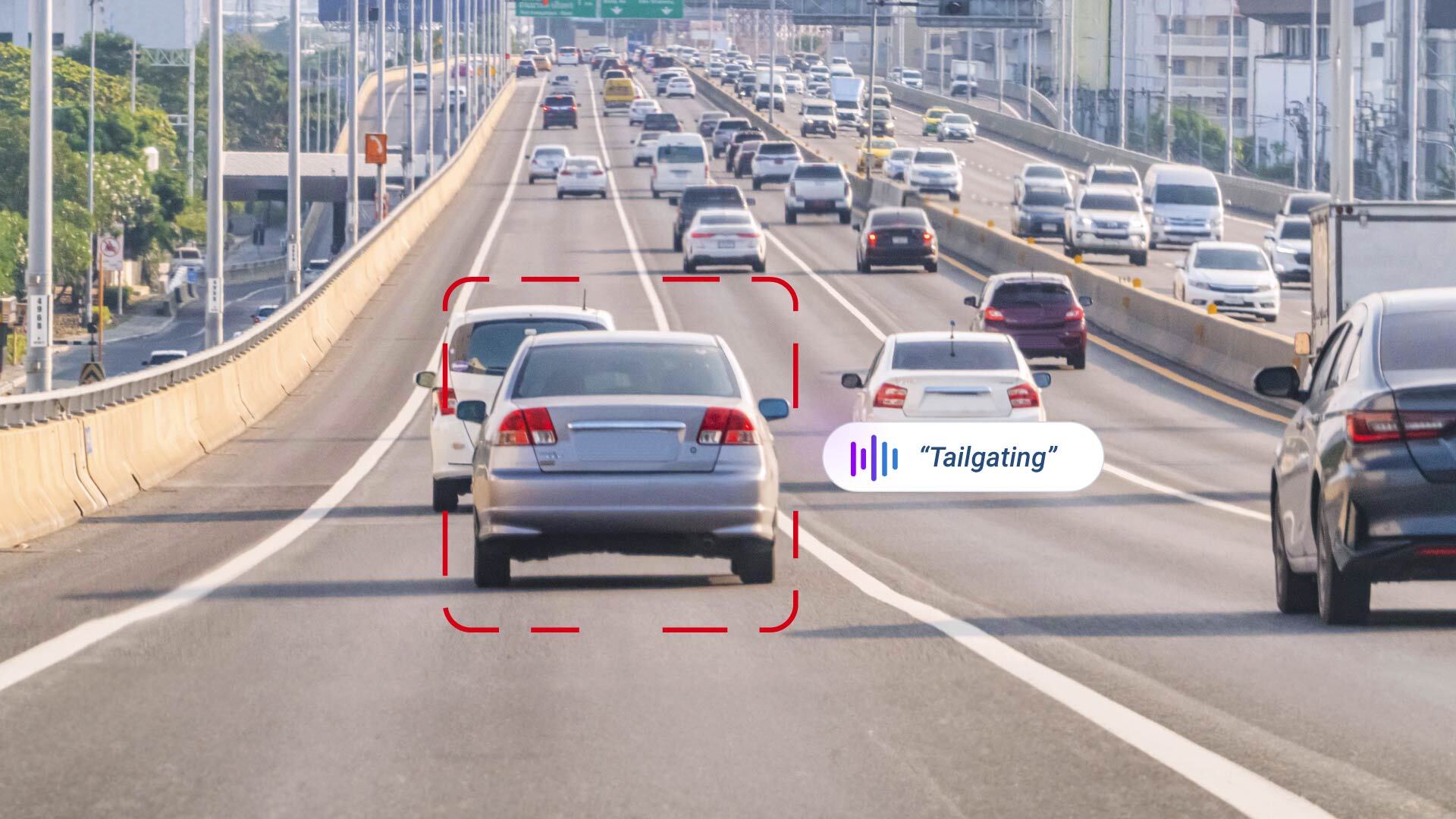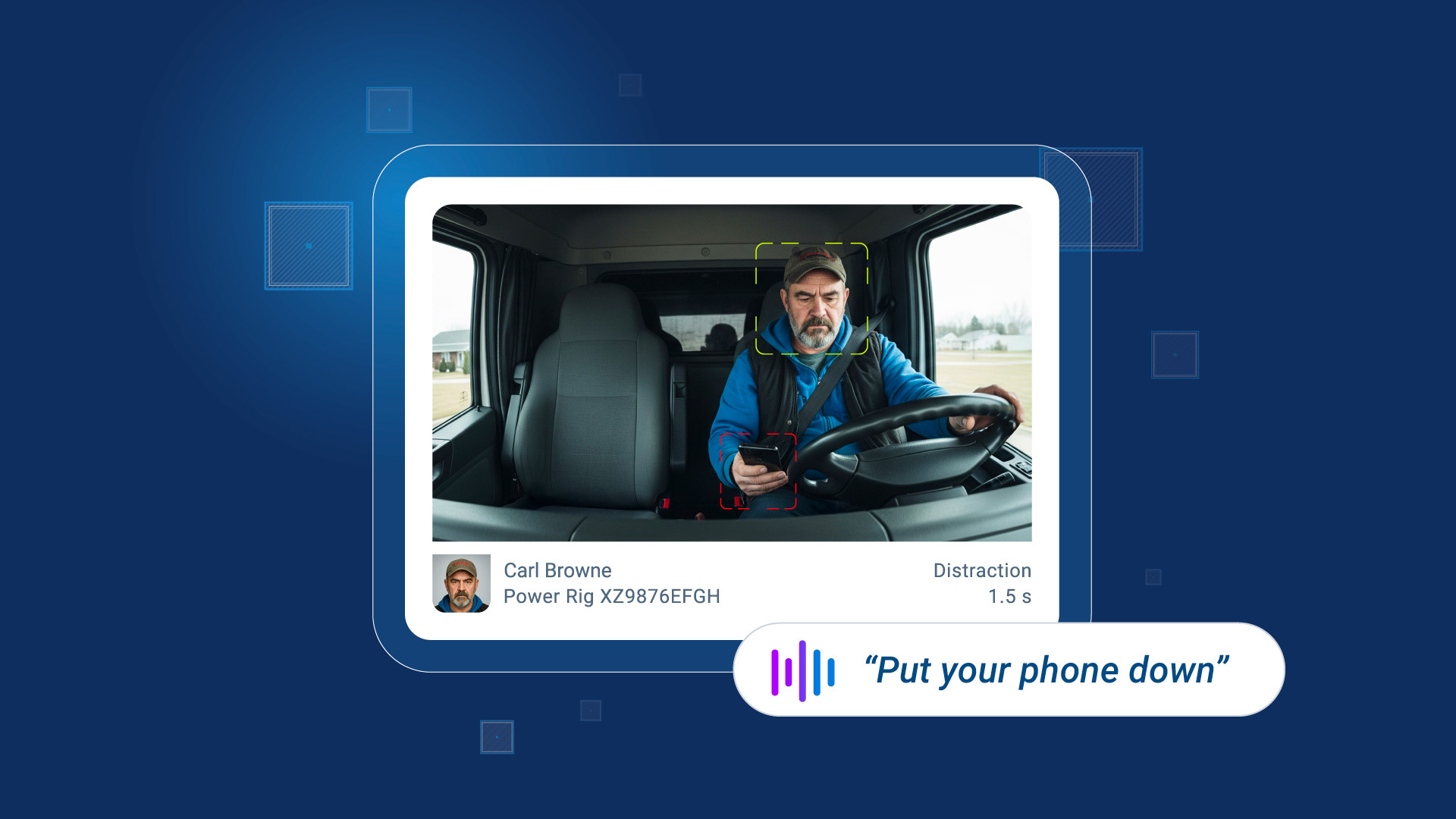8 Road crash statistics you shouldn’t ignore
Discover the latest road crash statistics to raise awareness about driver and road safety.

Vice President, Connected Car and Platform Solutions
Aug 31, 2022

It's impossible to talk about vehicle safety and not recognize the alarming increase in road crash statistics, and even more, in vehicle crash fatalities. Collisions and fatalities have a significant impact on the commercial vehicle industry and beyond. On average, a collision can add up to $16,000 to $75,000 in related expenses for a company. We gathered some important numbers you can use to call attention to road safety within your fleet.
1. Large trucks account for 9% of all vehicles involved in fatal crashes
According to the National Safety Council (NSC), large trucks are defined as any medium or heavy truck weighing more than 10,000 pounds, excluding buses and motorhomes. In 2020, large trucks were involved in crashes that resulted in a total of 4,842 fatalities and 107,000 injuries.
Of these deaths, 71% were occupants of passenger vehicles, with 17% being the occupant of the large truck and 12% being pedestrians or cyclists. In addition, 63% of these fatalities occurred during daylight hours and 5% happened in construction zones.
2. Drivers with previous driving infractions have a higher chance of being involved in fatal crashes
The National Highway Traffic Safety Administration (NHTSA) reported that 21% of large truck drivers with prior history of non-fatal collisions were involved in a fatal road crash in 2020. In addition, 19% of all large-truck drivers involved in fatal crashes had at least one speeding violation on record.
Large trucks were also involved in 80% of fatal multi-vehicle crashes as opposed to fatal single-vehicle crashes. When it comes to impact points in fatal crashes, large vehicles hit passenger vehicles head on 32% of the time and were rear-ended 22% of the time.

3. There are 1.35 million deaths due to road crashes every year
Brake reports that someone is killed on the road every 24 seconds. Deaths due to road crash also represent the eighth highest cause of death for people of all ages. The World Health Organization (WHO) predicts that by 2030, it will rise to the seventh highest cause of death.
4. Speeding is directly linked to a higher likelihood of death in a crash
In fact, for every 1% increase in speed, there is a 4% greater risk of death and a 3% increase in the severity of a crash. This means that if the speed limit is 100 kilometers per hour, going just 10 kilometers over the speed limit increases the risk of a deadly crash by 40%.
In addition, the risk of death pedestrians face in head-on incidents increases 4.5 times from when the car is traveling at 50 kilometers per hour to 65 kilometers per hour. The risk for death in a vehicle-to-vehicle sideswiping collision is also 85% when a vehicle is traveling at just 65 kilometers per hour.
By coaching drivers to slow down, you can increase safety and save on fuel. Learn how to put the brakes on speeders.

5. Road crashes will cost the world economy approximately $1.8 trillion by 2030
The Centers for Disease Control (CDC) states that both fatal and non-fatal crashes will cost the world an equivalent of a yearly tax rate of 0.12% on global growth domestic product. CDC research also shows that death rates due to vehicle crashes are three times higher in low income countries. Low income countries account for 60% of the world’s registered vehicles, but 90% of the world’s deaths are due to fatal crashes.
6. Nearly half of those who die in road crashes are not wearing seat belts
Despite the first seat belt mandates being introduced back in the 1960s, nearly 10% of Americans still do not wear seat belts according to 2021 NHTSA results. Further results reveal that 47% of all fatal road crash victims in the U.S. were not wearing seat belts. 55% of those killed at night were also not wearing seat belts.
For people who think that airbags are a good replacement for a seat belt, NHTSA also notes that air bags are designed for a scenario where someone is wearing a seat belt and positioned properly in their seat. Without a seat belt, the force of the airbag deploying could hurt or kill you.

7. Distracted drivers are four times more likely to be involved in a crash
Taking your eyes off the road for two seconds doubles your risk of crashing. Distracted driving can mean anything from talking on the phone or texting — both hands-on and hands-free — to eating, adjusting settings on your vehicle’s dashboard or just losing focus on the road.
Distracted driving accounts for 80% of collisions and 65% of near-collisions, resulting in approximately 4 million vehicle crashes in North America per year alone. In addition, 21% of fatalities in road crashes are the direct result of a driver using their phone or other electronic devices.
One person is injured in a distracted driving collision every 30 minutes, according to estimates.
8. A pedestrian dies every 85 minutes from being struck by a vehicle
In 2019, the NHTSA reported 6,205 pedestrian deaths and 140,000 injuries in vehicle-related incidents. In addition, 20% of total vehicle deaths were made up of pedestrians. From those numbers, 569 fatalities and 4,000 injuries were related to incidents involving large trucks. Between 2010 and 2019, pedestrian fatalities also rose by 62%.

What can be done to improve road safety?
With fleets making up more than a quarter of road traffic in many countries, it is imperative that businesses continuously work to reduce risk for their employees and others on the road.
Fleet and safety managers often have many responsibilities, that’s why fleet management software can be useful. To help improve fleet safety, fleet managers can develop or implement:
The need for global safety standards
In the U.S., road safety standards aren’t too difficult to find, as there are many regulatory standards that manufacturers must comply with in order to sell a vehicle in the U.S. This includes seat belts, air bags, electronic stability control (ESC) systems and rear backup cameras, to name a few.
What you may find surprising is that the same level of safety standards are not applied globally, and often fleet managers with global responsibilities find themselves challenged to provide all employees with the same level of safety features and minimum standards.
As a result, companies often have varying levels of standards and company safety policies by country, simply because regulators haven’t adopted safety policies or these features are not offered in certain countries where the vehicles were manufactured.
Developing global safety initiatives
Though global safety standards have not been implemented thus far, the United Nations Department of Safety and Security (UNDSS) is looking to change this. In 2019, the UNDSS launched a road safety strategy that aims to reduce the number of road crashes by 50% by 2030. The strategy uses its five pillars — road safety management, safer vehicles, safer road users, post-crash response and safer driving environments — to coordinate the interactions of speed, vehicles, road user behavior and road infrastructure to improve global road safety.
In addition, in 2021, the Global New Car Assessment Programme (Global NCAP) released a 10-year action plan for improving global road safety. The plan was developed in connection with the WHO and the UN to outline an equalized safe system approach to global road safety.
Both of these initiatives serve as great steps toward implementing global road safety practices. With the standards of safety regulations drastically varying from country to country, if the U.S. adopted this policy, it would greatly push the needle on other countries calling for these standards as well.
Implementing crash safety standards
Adopting a 4- and 5-star-only crash rating system within your fleets, you are not only providing a safer work experience for your drivers, but you will also be saving your company money long-term. Knowing that 20-50 million people are injured in crashes annually, the fiscal advantage combined with the ability to keep your employees safe and avoid millions in medical and liability costs seems like a no-brainer. So why aren’t more companies doing it?
While crashes are going to happen regardless, the amount of damage is within your control. Simply put, safer vehicles equal less damages, which in turn saves money and lives.
You can use Geotab to manage risky driving and lower your collision rate, plus much more. To learn more, explore our fleet safety solutions.
If you have questions or want to hear what others are saying about fleet safety, visit the Geotab Community.
Originally published December 19, 2017.
Subscribe to get industry tips and insights

Vice President, Connected Car and Platform Solutions
Sherry Calkins has been involved in the global Fleet, Mobility and Automotive industry for over 20 years, working both nationally and globally.
Table of Contents
- 1. Large trucks account for 9% of all vehicles involved in fatal crashes
- 2. Drivers with previous driving infractions have a higher chance of being involved in fatal crashes
- 3. There are 1.35 million deaths due to road crashes every year
- 4. Speeding is directly linked to a higher likelihood of death in a crash
- 5. Road crashes will cost the world economy approximately $1.8 trillion by 2030
- 6. Nearly half of those who die in road crashes are not wearing seat belts
- 7. Distracted drivers are four times more likely to be involved in a crash
- 8. A pedestrian dies every 85 minutes from being struck by a vehicle
- What can be done to improve road safety?
- The need for global safety standards
Subscribe to get industry tips and insights
Related posts
.jpg)
.png)
AI dash cams vs. traditional: Which delivers better fleet safety?
December 8, 2025
5 minute read

Elevating Worker Safety Through Simplicity: The OK Alone Story
December 3, 2025
2 minute read

Geotab GO Focus Plus Camera Rules, Thresholds, and Event Buffers Explained
October 27, 2025
2 minute read

How AI dash cams help fleets tackle distracted driving and reduce collisions
October 23, 2025
4 minute read

How Geotab’s Predictive Safety Model helps fleets prevent collisions before they happen
October 17, 2025
2 minute read